Stellar Threads: Trying on a Spacesuit Brings Thrills and Challenges
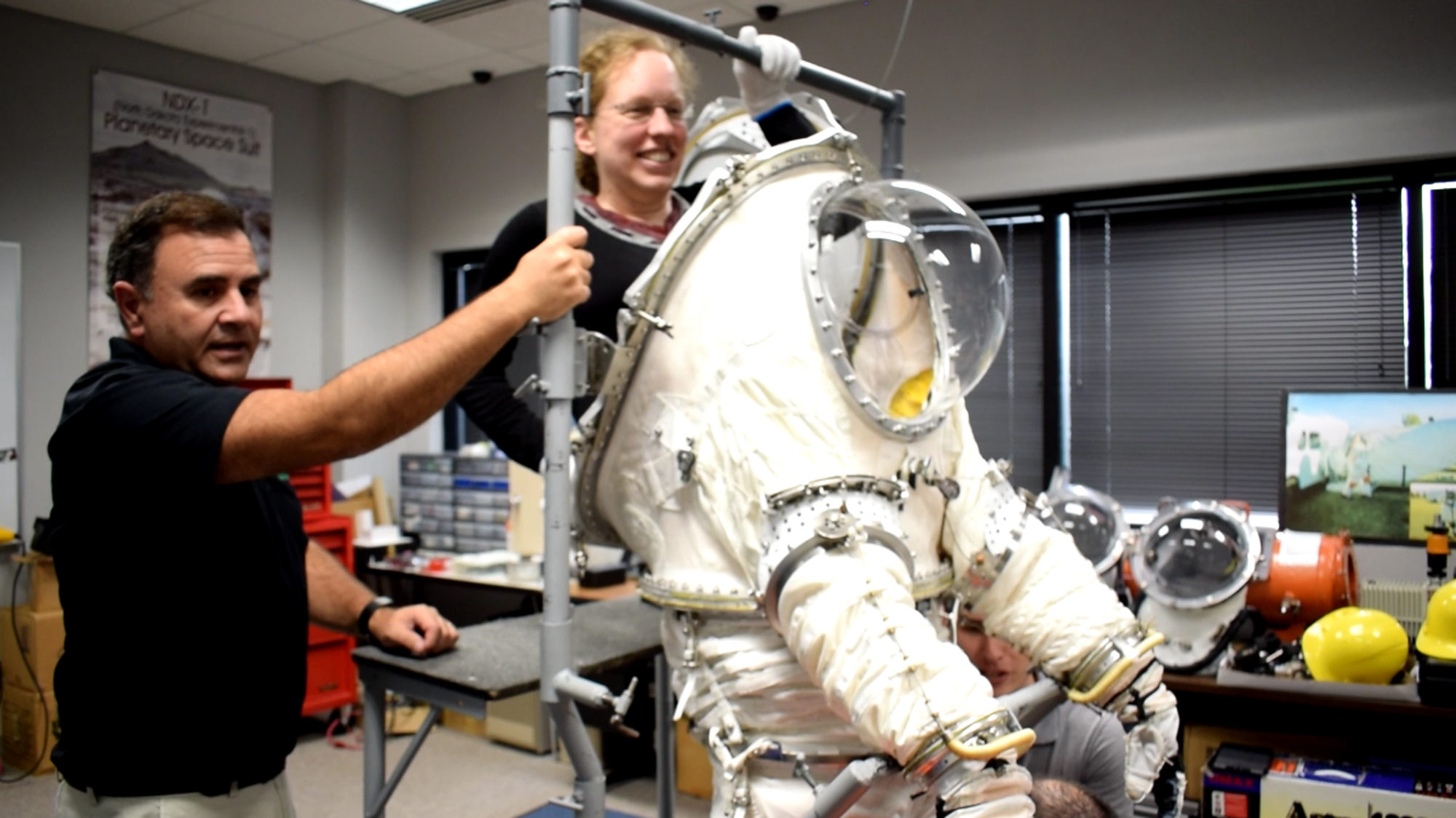
Nothing says celebration like trying on a spacesuit. So when Space.com contributor Elizabeth Howell successfully defended her dissertation on May 30 at the University of North Dakota, she also arranged to test a spacesuit being designed there, called NDX-2. The suit's principal investigator, Pablo de León, who assisted with Howell's research, ran the impromptu spacesuit trial with the help of two graduate students. De León regularly tests spacesuits similar to this one at a habitat in a rugby field just across the street from the university's Space Studies department.
Scroll through the photos above to step through the spacesuit test.
Read the full story: Spacesuit Simulation: What It's Like to Wear an Astronaut's Outfit
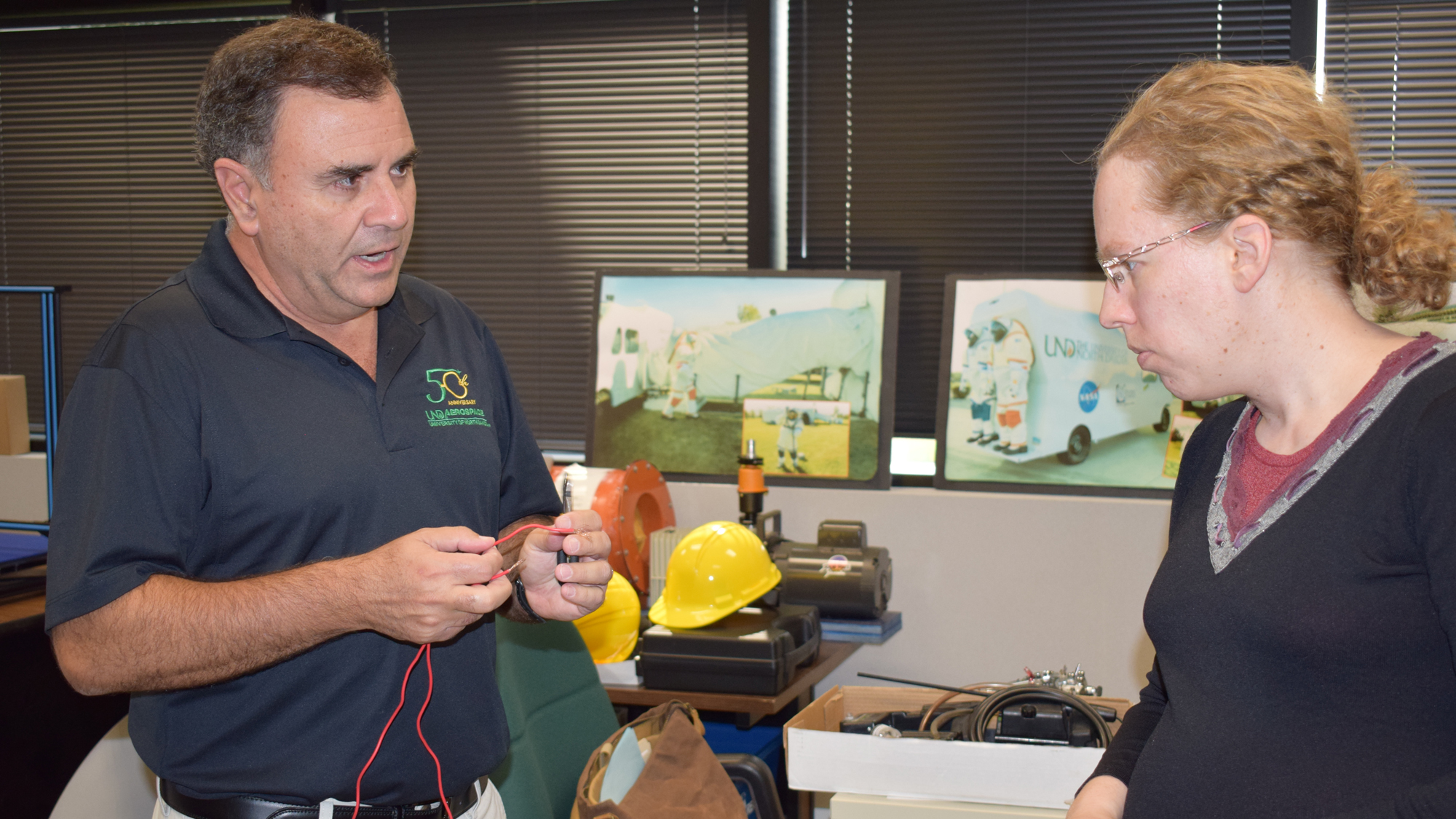
Safety first
Pablo de León, a space studies professor at the University of North Dakota, gives Space.com contributor Elizabeth Howell (right) a safety briefing for donning a spacesuit. De León manages the University of North Dakota Human Spaceflight Laboratory, as well as the university's Inflatable Lunar/Mars Analog Habitat, which hosts simulated space missions that are up to two weeks long.
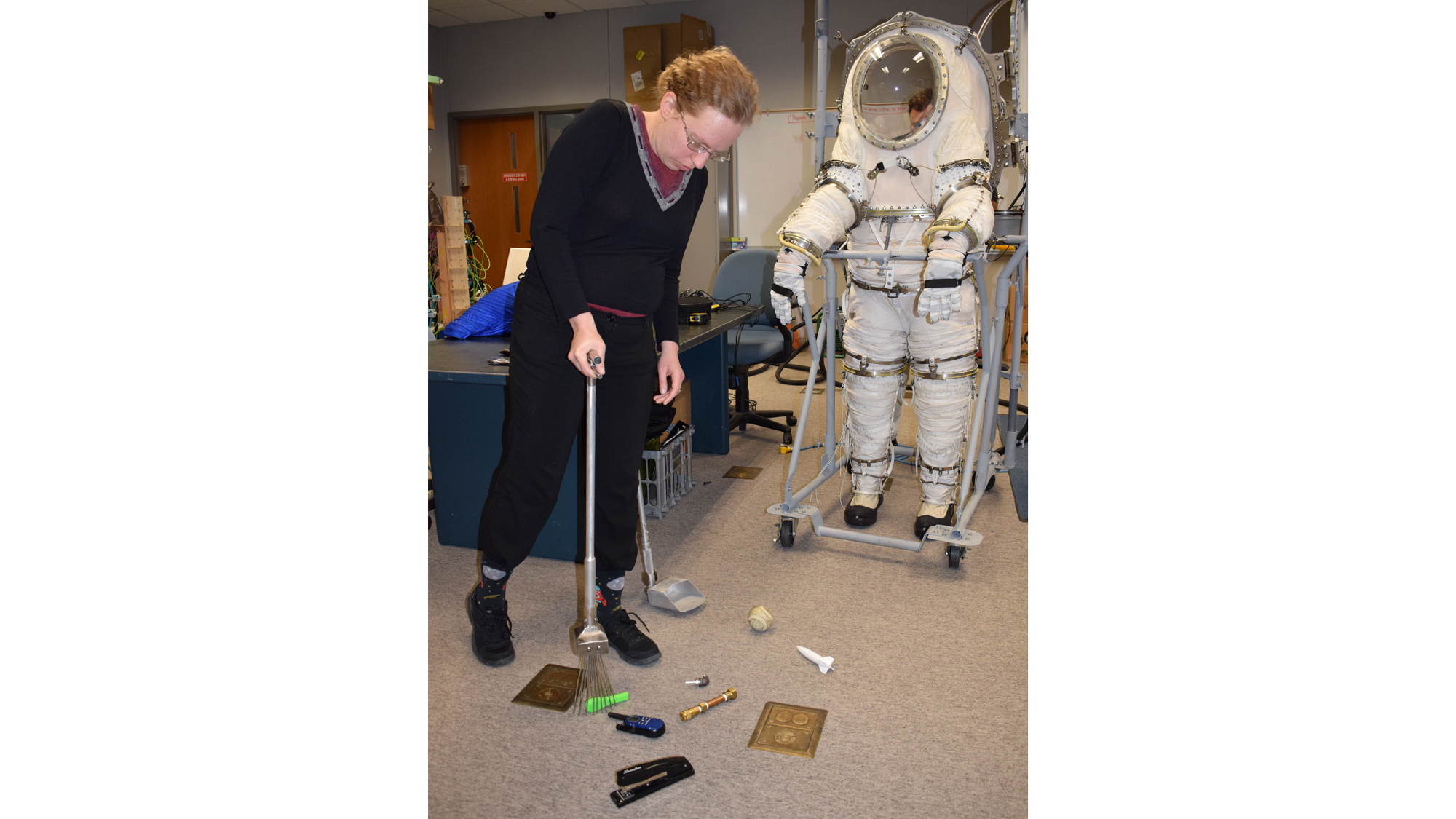
Tool time
Space.com contributor Elizabeth Howell practices picking up simple objects in the lab at the University of North Dakota. Spacesuits make it harder to do this task, due to decreased mobility and limited sightlines.
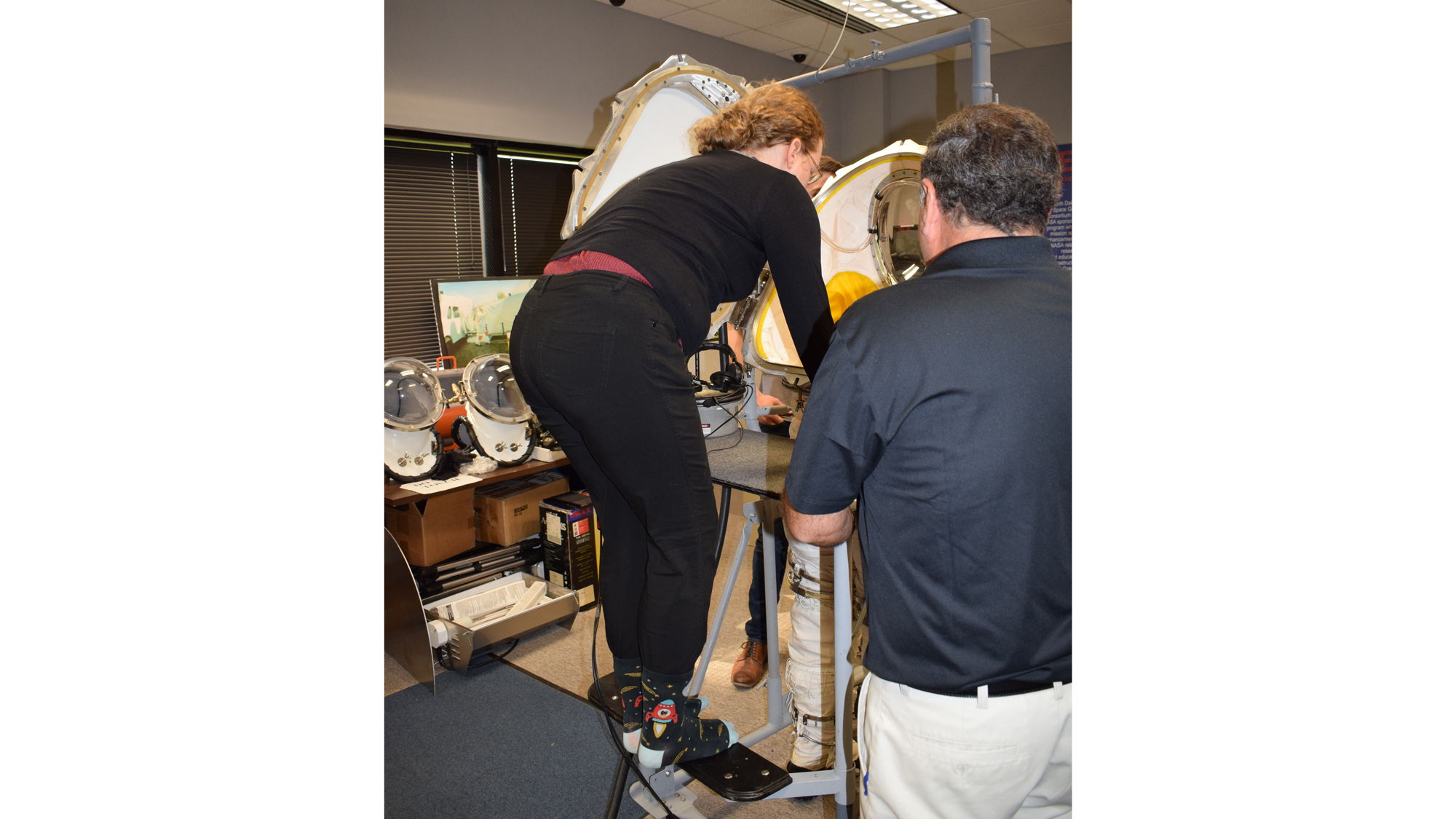
Climbing in
Space.com contributor Elizabeth Howell (left) climbs into the NDX-2 spacesuit while being assisted by Pablo de León, a space studies professor at the University of North Dakota. The person wearing the spacesuit climbs into the NDX-2 from the back. The suit is designed to dock on the outside of a spacecraft, habitat or rover between uses, as a sort of separate spacecraft, so that an astronaut can enter or leave the spacesuit without bringing it inside. This reduces the amount of dust or debris brought into an astronaut habitat.
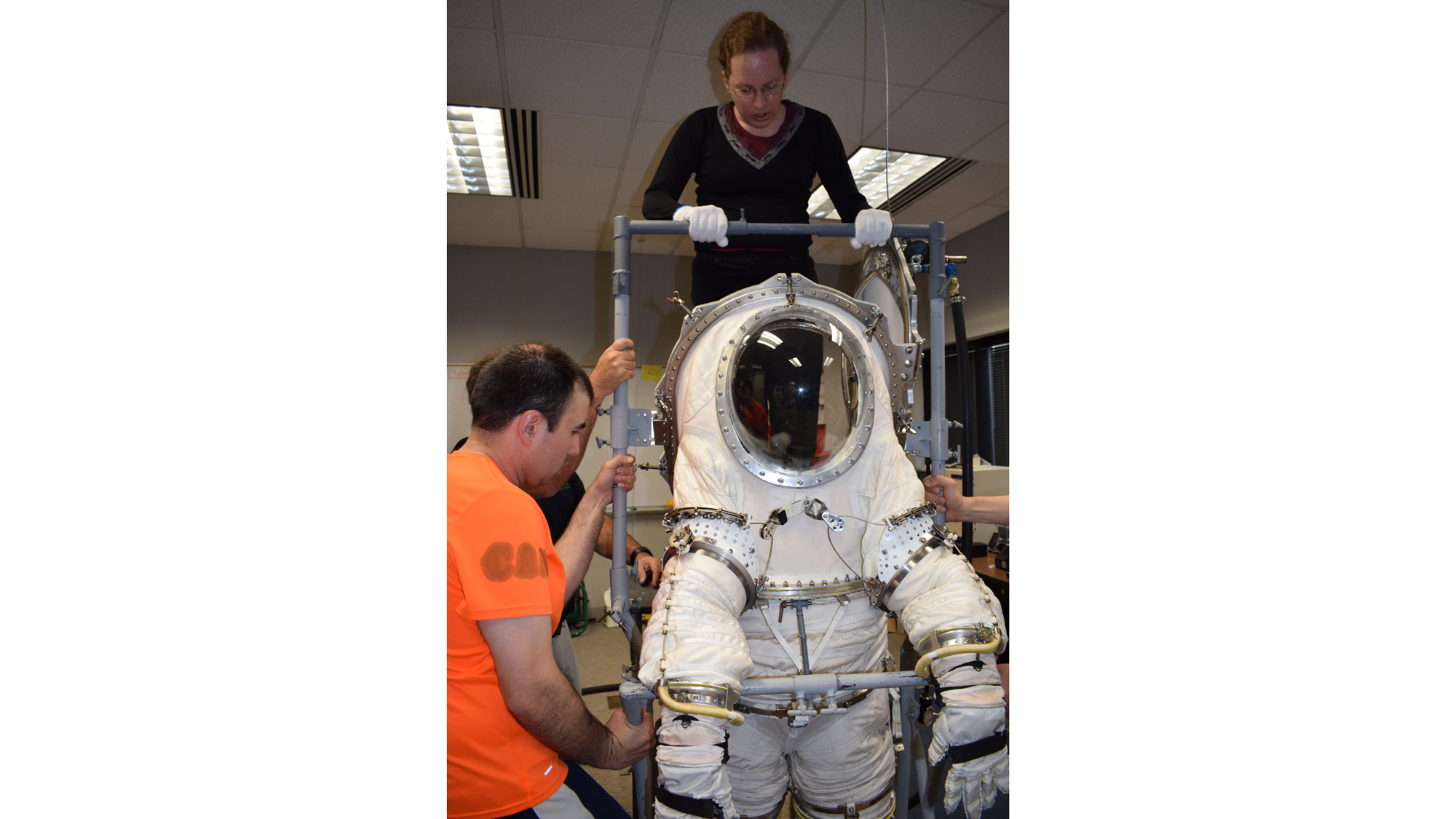
Space dunk
Space.com contributor Elizabeth Howell (top) grasps a bar to lower herself into the NDX-2 spacesuit. At left is University of North Dakota graduate student Joseph Clift. This is a laboratory version of the NDX-2, fixed in place for testing; a more flexible version is used in the field at the Inflatable Lunar/Mars Analog Habitat.
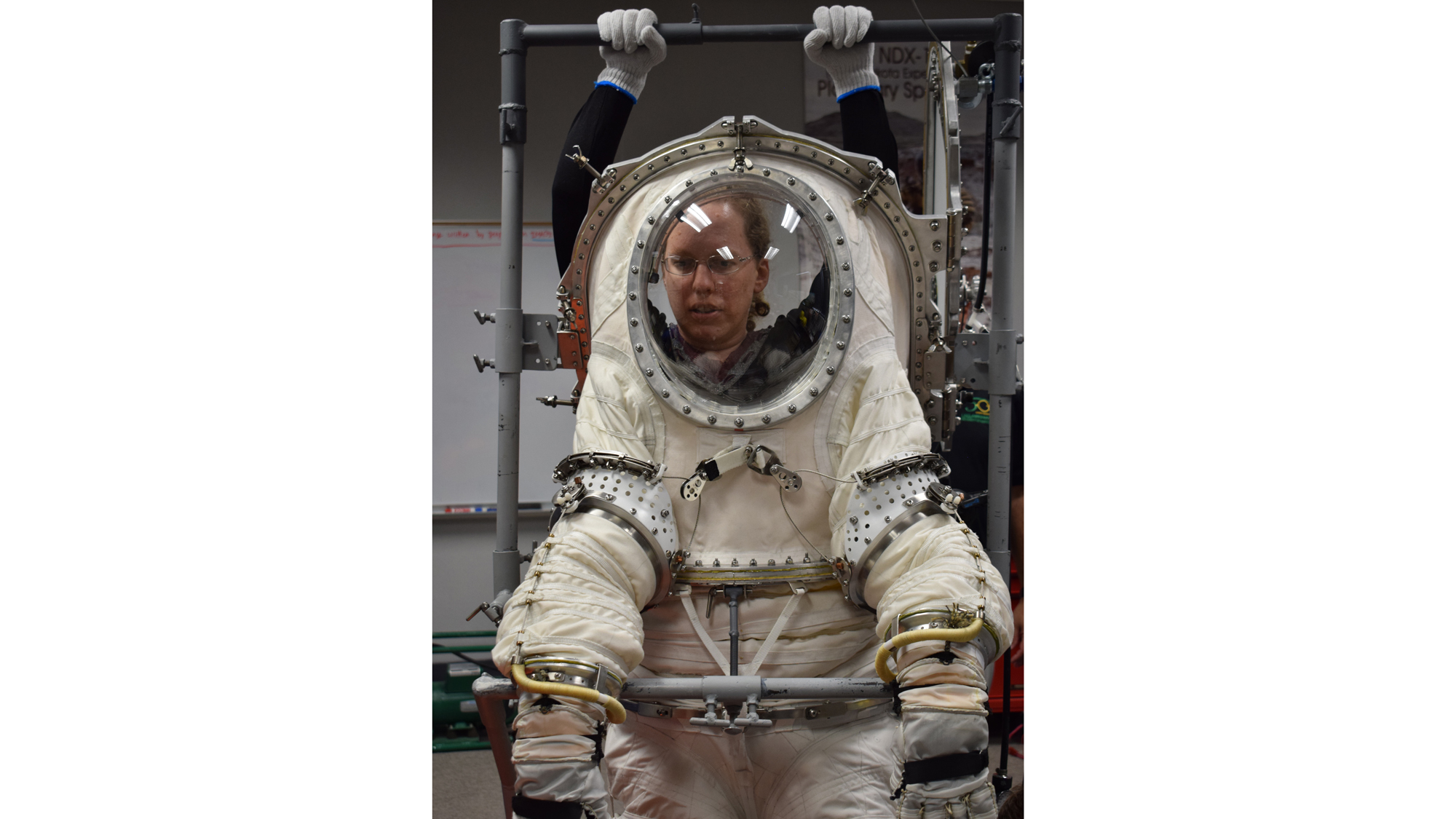
Tight fit
With the help of two students (off camera), Space.com contributor Elizabeth Howell wiggles herself into the NDX-2 spacesuit at a lab in the University of North Dakota. Howell's left foot was stuck for much of this process, and the spacesuit doesn't allow subjects to look down — making communication within the team essential to resolve issues.
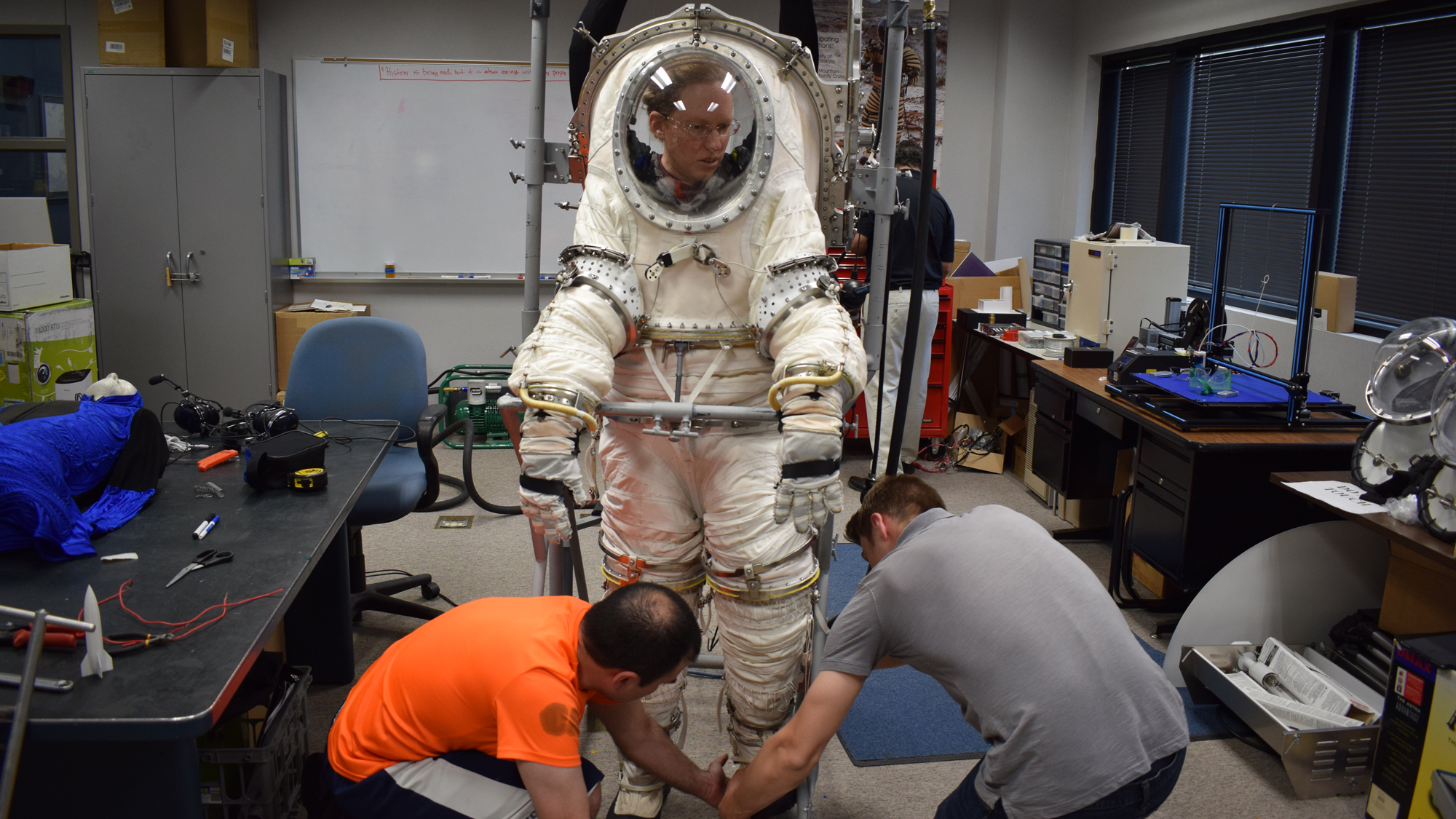
Spacesuit teamwork
University of North Dakota graduate students Joseph Clift (bottom left) and Bradley Hoffmann (right) help Space.com contributor Elizabeth Howell into the NDX-2 spacesuit. Operations like this one require trust between team members because the person wearing the spacesuit needs help to get in and out of the NDX-2 safely.
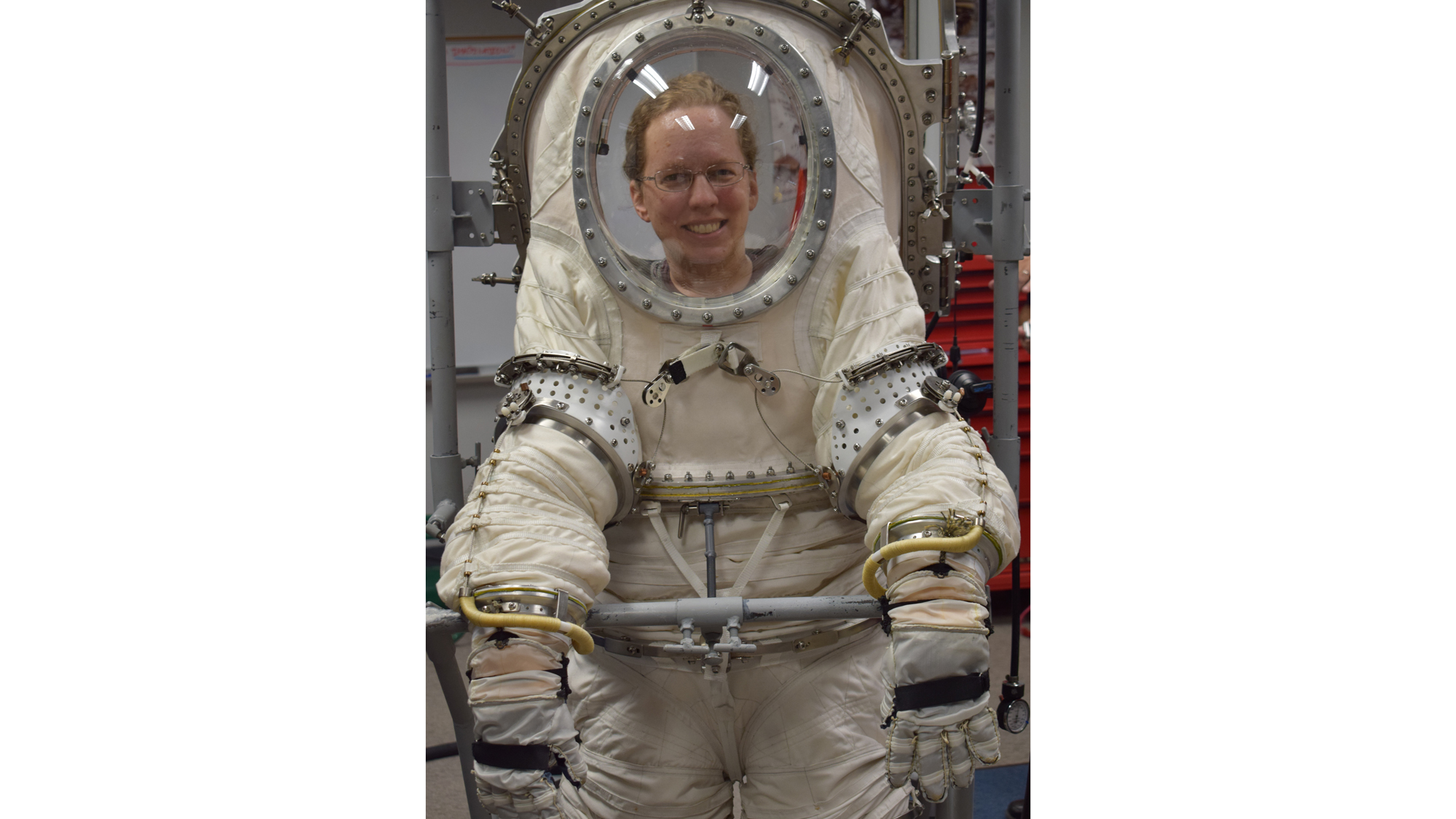
Sticking the landing
Space.com contributor Elizabeth Howell smiles in relief when both feet securely touch ground inside the spacesuit. The back of the spacesuit is still open but will be sealed shortly. Pressure inside the spacesuit is maintained with a nearby (off-camera) air compressor, which feeds air into the spacesuit through a plastic tube.
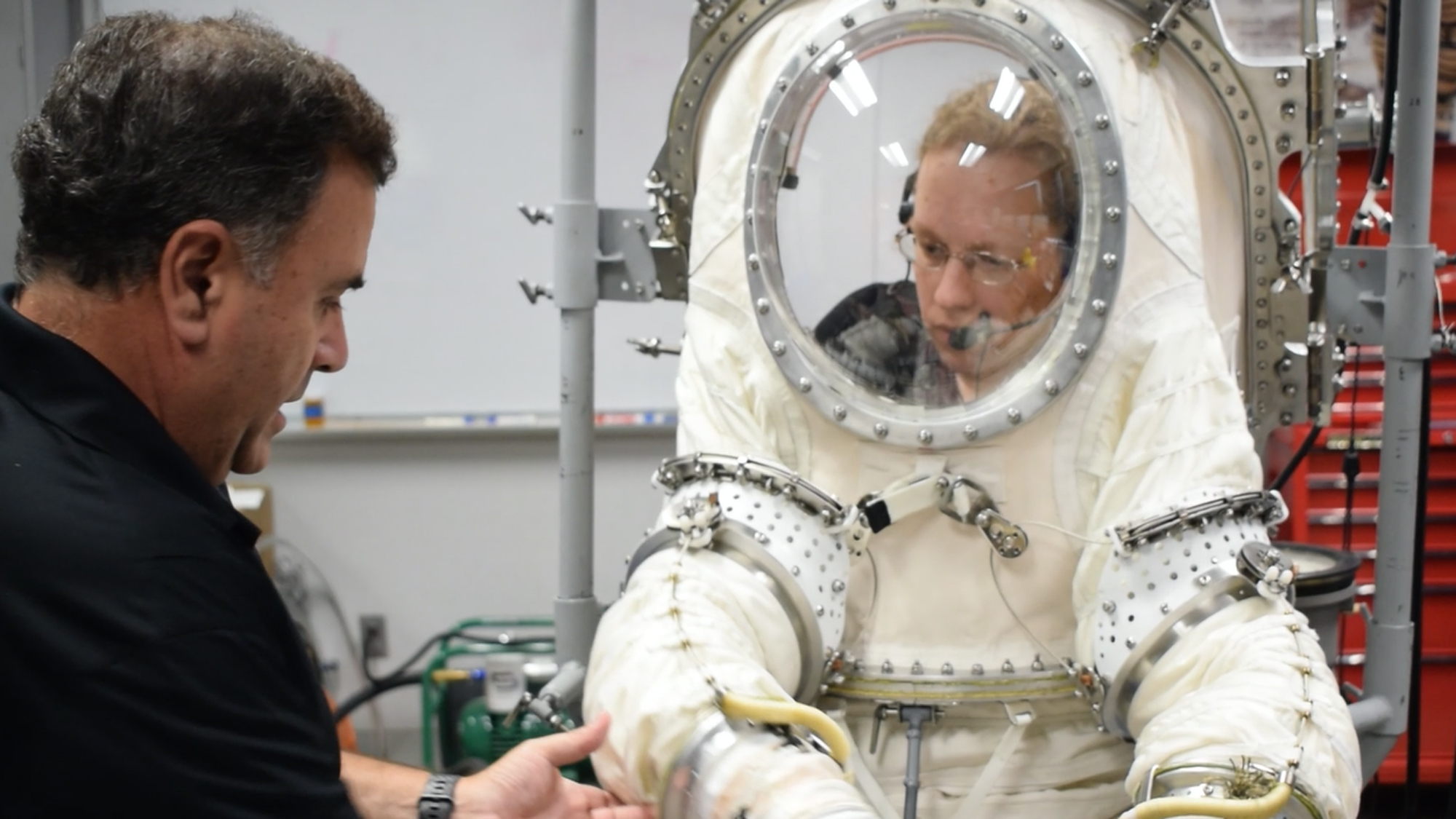
Readying for testing
Pablo de León, a space studies professor at the University of North Dakota, explains spacesuit-testing procedures to Space.com contributor Elizabeth Howell (right). An intercom allowed the two to communicate during the trial. If communications cease or an emergency arises, de León said, it is possible to get a subject out of the spacesuit in mere seconds.
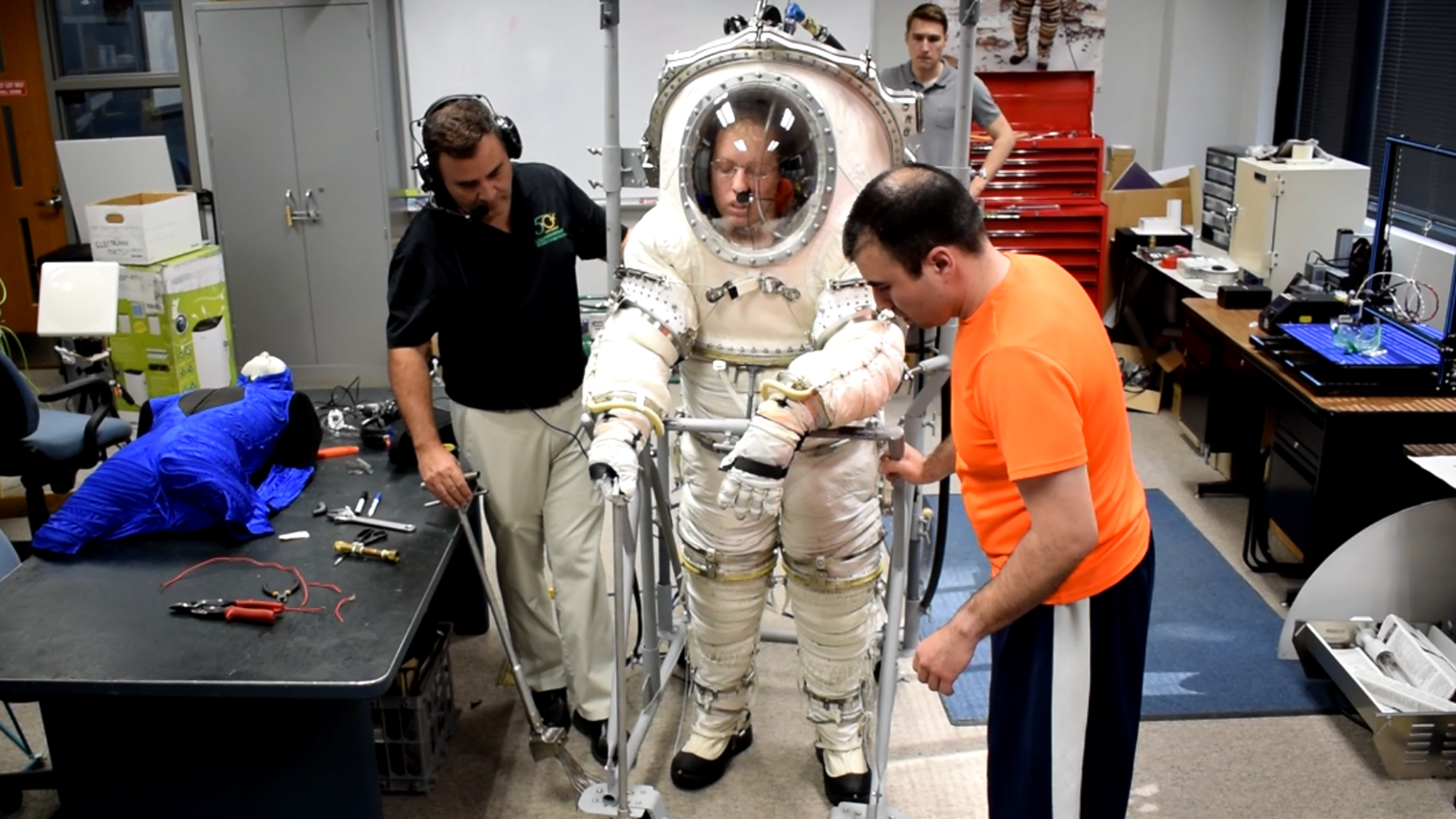
Tool time, in a spacesuit
Space.com contributor Elizabeth Howell (in spacesuit) tries unsuccessfully to pick up items using a simulated astronaut tool. Visibility at the bottom of the astronaut helmet was limited, and her arms were too short to reach the ground. Assisting is Pablo de León, a space studies professor at the University of North Dakota (left), along with graduate students Joseph Clift (foreground right) and Bradley Hoffmann (background right).

Mission accomplished
Testing complete! Space.com contributor Elizabeth Howell pulls out of the NDX-2 spacesuit, under supervision by Pablo de León, a space studies professor at the University of North Dakota (left). This prototype suit may be adapted for use in the field if NASA lunar landing missions move forward as planned, because NDX-2 is primarily designed to accommodate the priorities and constraints of walking on the moon.
Follow Elizabeth Howell on Twitter @howellspace. Follow us on Twitter @Spacedotcom and on Facebook.

Elizabeth Howell (she/her), Ph.D., was a staff writer in the spaceflight channel between 2022 and 2024 specializing in Canadian space news. She was contributing writer for Space.com for 10 years from 2012 to 2024. Elizabeth's reporting includes multiple exclusives with the White House, leading world coverage about a lost-and-found space tomato on the International Space Station, witnessing five human spaceflight launches on two continents, flying parabolic, working inside a spacesuit, and participating in a simulated Mars mission. Her latest book, "Why Am I Taller?" (ECW Press, 2022) is co-written with astronaut Dave Williams.
